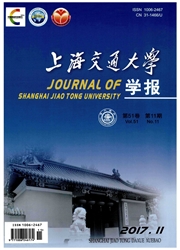

 中文摘要:
中文摘要:
针对复合地层泥水盾构开挖面稳定性问题,采用试验研究和数值仿真分析相结合的方法,并结合宏观及微观研究手段,对泥水盾构施工过程中周围土体力学特性及地层变位,进行了定量分析,揭示了该地层条件开挖面的失稳破坏模式.在此基础上建立了完善的开挖面稳定性三维解析方法,主要得到以下结论:对于常见上软下硬复合地层情况,低应力水平条件下泥浆的渗入能在一定程度上提高土体的强度,减缓侧向变形的发展,因此,有效泥浆支护压力宜控制在较小的区间取值,且不宜过大,并应充分利用盾构本体正面挡板来保持地层的稳定;上软下硬复合地层中开挖面失稳破坏模式与砂性土地层的失稳破坏模式相似,即表现为开挖面前方为楔形体,破坏区域顶部为烟囱状,最大沉降量发生在开挖面前方顶部附近.
 英文摘要:
英文摘要:
The face stability mechanism for slurry shield under the layered ground condition is of great sig- nificance. During the process of the shield tunnelling, the original structure and the strength of the soil around the face will be changed due to the slurry gradual infiltration into the excavation face. Thus, in order to connect and quantify the relationship between the mechanical property and the microscopic struc- ture, the triaxial experimental tests coupled with the numerical simulation method for evaluating the tun- nelling-induced ground movement were introduced, Then, based on the actual geometry of the failure mechanism in clay, a modified wedge model with its corresponding analytical solution for the critical face support pressure was presented. For the layered ground condition, it is recommended that the slurry sup- port pressure should be controlled to a relatively low level due to the softening characteristic of clay soil, and it is the pressure produced by the shield cutter bits and transferred to the excavation face contributes to face stabilization. The geometry of the failure mechanism in this ground condition resembles the case in sand: it exhibits a chimney-like failure mechanism, can be better described by the wedge stability models, and the maximum displacement of the ground just occurs on top of the tunnel face.
 同期刊论文项目
同期刊论文项目
 同项目期刊论文
同项目期刊论文
 期刊信息
期刊信息
